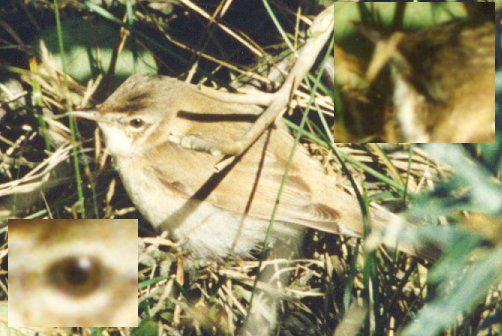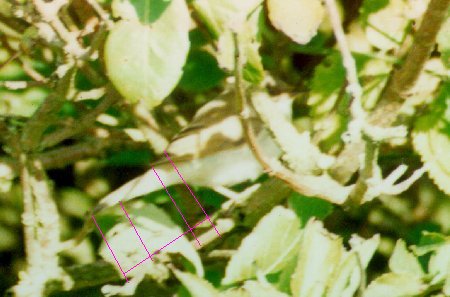Paddyfield Warbler - Acrocephalus agricola
After a week of rain and westerly storms, the weather was finally
clear in the morning of Sunday September 18th 1994. That morning 22 birders
from the mainland came to the isle of Vlieland (Friesland), because
Leo Heemskerk with eight other birders (with me, happily!) had found a
Yellow-breasted Bunting Emberiza aureola
the day before. Everybody had good looks of this bird,
but the nine birders decided to scrutinize the eastern end of Vlieland.
At around 13:00 hours, Lammert van der
Veen discovered an acrocephalus warbler, wich he immediately recognized as
a Paddyfield Warbler Acrocephalus agricola! The other eight
immediately
surrounded the bush, checked Lammert's identification and called the other 22
birders on the Island with the then only one present mobile phone and the pager-system. Then, after some effort, everybody had good looks
of this bird and several pictures were taken by Sander Lagerveld and Arnold Veen. The bird was last seen at around 16:15 hours, since everyone had to catch the boat to the mainland. Next day, it could not be found again.

18 September, Oost-Vlieland, Vlieland Fr; © Sander Lagerveld.
Note the dark feathers on the side of the crown, the dark line through the eye, light neck-sides, warmer breast-sides and the short primary-projection.

18 September, Oost-Vlieland, Vlieland Fr; © Sander Lagerveld.
Note the long undertailcoverts.
This was the seventh record for the Netherlands (cf Dutch Birding 18: 13-16, 1996).
Previous records were October 1971 Laaxum (Friesland),
October 23rd 1982 and October 13th 1984 Makkum (Friesland),
September 26th Vlieland (Friesland), October 8th 1987 one at Zuidland
(Zuid-Holland) and one at the Oostvaardersdijk (Flevoland) (cf Dutch Birding 7: 121-128 and
140-141, 1985, Dutch Birding 9: 28 and 181-188, 1987, Dutch Birding 9: 28, 1987 and Dutch Birding 11: 29-30, 1989).
Due to the low quality of the film and the a-typical posture of this bird, its identification was questioned by several birders and considered by some of them to be a Booted Warbler Hippolais caligata. However, photographs of a Paddyfield Warbler on Fair isle in September 2012 or a bird shown on page 388 in Birding World 10 (10), 1997 both show birds with exactly the same jizz and colours as our bird, so we hope they will agree with us after all! Moreover, the inset showed the diagnostic light eye!
Do you want to go to the main-index, the 1994-index or the next species, the Pine Bunting?

